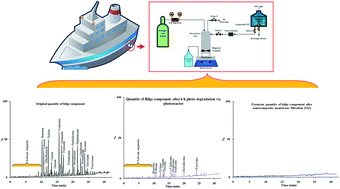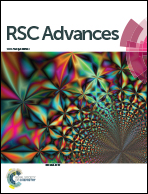Novel hybrid photocatalytic reactor-UF nanocomposite membrane system for bilge water degradation and separation
Abstract
This study focuses on the design and performance of a hybrid system consisting of a photocatalytic reactor and ultrafiltration permeation cell. Initially, an ultraviolet (UV) lamp was installed in the photocatalytic reactor to decompose the bilge organic pollutants in the presence of 200 ppm titanium-dioxide (TiO2). Individual hydrocarbon compounds of bilge water samples were identified by gas chromatography-mass spectrometry (GC-MS) analysis. Two types of membrane, which are a pure polyvinylidene fluoride (PVDF) membrane and PVDF/modified halloysite nanotube clay (M-HNTs) nanocomposite membrane were fabricated aiming to enhance the rejection, flux and fouling resistance for full filtration of pollutants from the photocatalytic reactor. The membranes were characterized by Fourier transform infrared (FTIR), field emission scanning electron microscopy (FESEM) and atomic force microscopy (AFM). Furthermore, GC-MS analysis showed that, over 90% bilge decomposition occurred by a photocatalytic reaction. The TiO2 cross-over during permeation was detected by using an atomic absorption spectrophotometer (AAS), which proved that, TiO2 rejection was more than 99% for the nanocomposite membrane. A UV- vis spectrophotometer confirmed over 99% rejection of decomposed bilge hydrocarbons via the nanocomposite membrane with 1.0 wt% of M-HNTs incorporated in the PVDF matrix.


 Please wait while we load your content...
Please wait while we load your content...